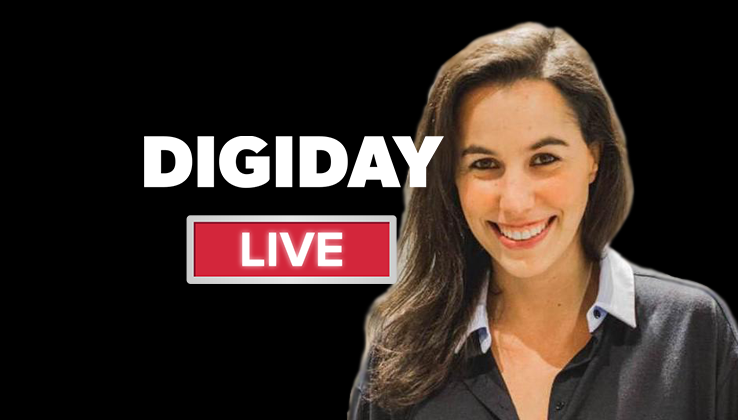Save 50% on a 3-month Digiday+ membership. Ends Dec 5.
Away’s Selena Kalvaria: ‘Everyone on the marketing team should work in a store first’

Subscribe: iTunes | Stitcher | RSS | Anchor
When luggage maker Away launched, the marketing plan never included a retail store. But then they opened a pop-up store as a test. Due to the success they saw, Away opened stores in New York, San Francisco, Los Angeles and Austin, with more locations to come. In the latest episode of Digiday Live, Away’s vp of brand marketing, Selena Kalvaria, said the customer interaction in store led to better marketing.
“I tell everyone on my marketing team to go work in a store first,” said Kalvaria. “You hear from the customers firsthand and see what their questions are.”
Stores drove over-performance.
“Brick and mortar is driving online sales in the geographies that we have those stores. They’re driving to awareness and the next layer like repeat purchases and community building. It’s the combination of seeing the products online but experiencing them offline and buying second products. Retail programming is part of the store strategy. We bring our community to talk about travel stories, to hear from panelists, to exchange cultural ideas. Now we have a lot of KPIs [for stores]. It’s achieving more than the concept was [built for].”
Designing a marketing team for a DTC brand with retail stores.
“Our marketing team is multi-faceted. We have a growth marketing team and a brand marketing team. We need performance but also build brand. Our organic social team develops all the content in-house and that’s our influencer marketing team, with partnerships and experiential marketing. Then we have our full creative service team. It’s a muscle where we’re working on a cohesive story for every platform. Part of the secret sauce is that the people who are working on the creative are experiencing the brand every day. We’re close to it. Marrying those two has been successful. Getting the tone of voice and visual identity and all those pieces right takes a really long time [when working with an agency]. Our in-house agency works best.”
An editorial operation away from the brand.
“Away has an independent media division with Here magazine that makes us money. It’s separate from Away. When you have a branded content operation, it’s not seen as authentic in terms of storytelling. Here is completely independent and objective. It does tie back to the product. But it’s not promotional. We have advertisers who work with us on projects like experiential partnerships.”
Ad position: web_incontent_pos1
Staying away from third-party retail.
“It’s easy to say that I want to scale by going to third parties for wholesale. It’s the fastest to reach more people. When you go to third-party retail, you lose control of the brand message and experience. The point of sale and your merchandise may not be how you like it. You’re not a part of the brand world, you’re a part of the retailer’s world. It can be tempting for a lot of DTC brands to go to third party retailers for the scale and money, but we’ve thought critically about this and we want to own the full customer experience.”
More in Marketing

Ulta, Best Buy and Adidas dominate AI holiday shopping mentions
The brands that are seeing the biggest boost from this shift in consumer behavior are some of the biggest retailers.

U.K. retailer Boots leads brand efforts to invest in ad creative’s data layer
For media dollars to make an impact, brands need ad creative that actually hits. More CMOs are investing in pre- and post-flight measurement.

‘AI is permeating everything we do’: How Guitar Center developed 2 AI tools this year
This summer, the company launched a chatbot called Rig Advisor to help customers find the right instruments and products.
Ad position: web_bfu




